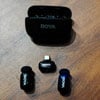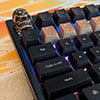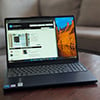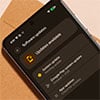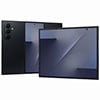Samsung Unpacked this year brought a ton of changes to Samsung's foldable lineup. Many of the things we've been asking for have finally come to fruition. The foldables are now thinner, lighter, and wider than before. There are some changes that are not welcome, however, and we'll get into those too.
It's an overall positive vibe coming from the event, and with good reason. Samsung is one of the leaders in the foldable space, though it has seen its previous dominance start to falter with other companies bringing better products in both the flip-style and book-style foldable space. This year's unpacked addresses those concerns and, at the very least, announces that the race is back on. Here's how Samsung responded.
Samsung Galaxy Z Fold7
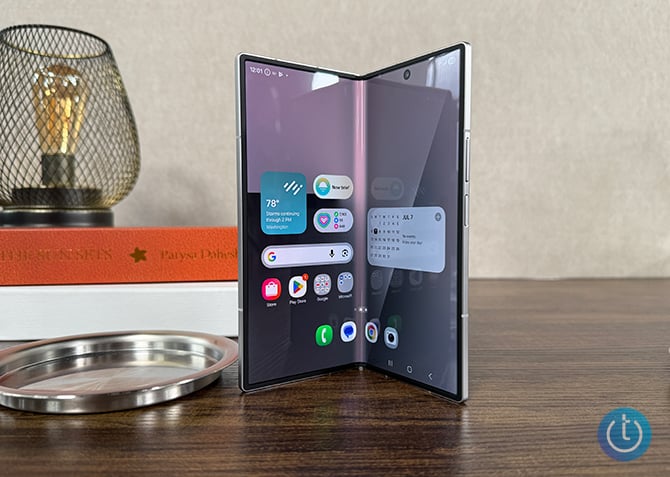
Starting off with Samsung's flagship foldable, the Z Fold7 is bringing what Samsung describes as the "ultra" experience to foldables. That starts with a redesign of the chassis, which makes the foldable extremely thin, light, and more durable. The new phone is just 8.9mm thick when closed – that's less than a millimeter thicker than the Samsung Galaxy S25 Ultra, by the way. Samsung also added the Ultra’s glass, which is 50% thicker (and more protective) than that on the Fold6, and the whole thing weighs in at just 215 grams.
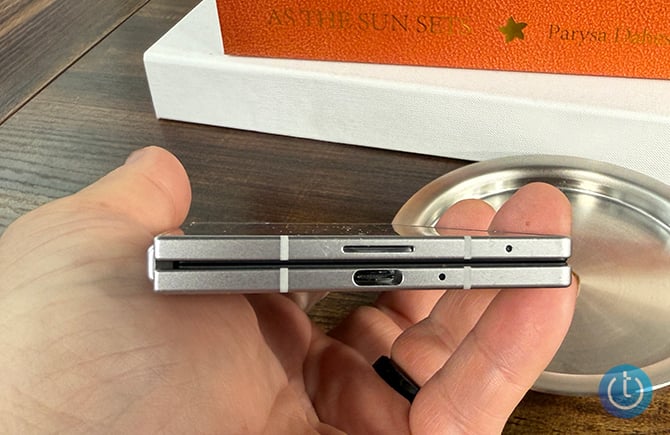
Inside, Samsung has the Snapdragon 8 Elite processor powering its flagship along with 12GB or 16GB of RAM paired with 256, 512, or 1TB of storage. The new foldable gets the same 4,400 mAh lithium-ion battery, which sounds not great until you consider that this phone is almost four millimeters thinner than the Z Fold6.
Rounding things out, you have a five-camera setup that includes a 200-megapixel main sensor, a 10-megapixel 3x optical zoom lens, a 12-megapixel ultrawide lens with autofocus, and two 10-megapixel selfie cameras. The camera on the inside of the display is no longer hidden by the screen – it was probably only a matter of time before that concept went away – but it has a 100-degree field of view, so it can keep the subject in frame.
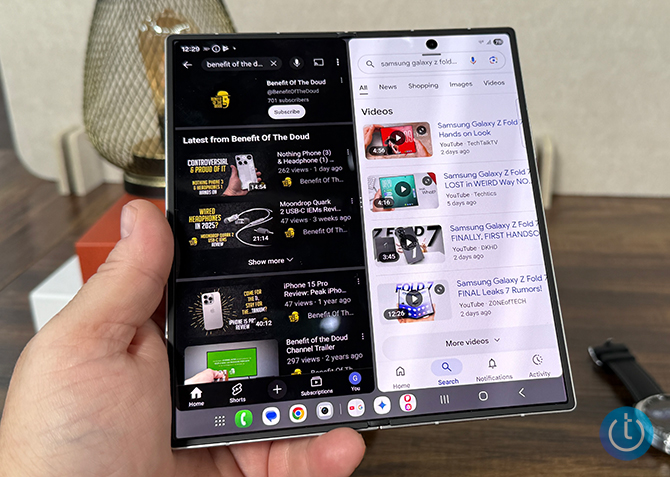
Speaking of the inside screen, it's an 8-inch dynamic AMOLED display which, on paper, matches the Pixel 9 Pro Fold. The Samsung Galaxy Z Fold7 will also be the first phone to ship with Android 16 on it, along with OneUI 8. Samsung is also promising seven years of operating system and security updates. The phone starts at $1999.99 on Samsung.com, up by $100 over last year's model.
Samsung Galaxy Z Flip7
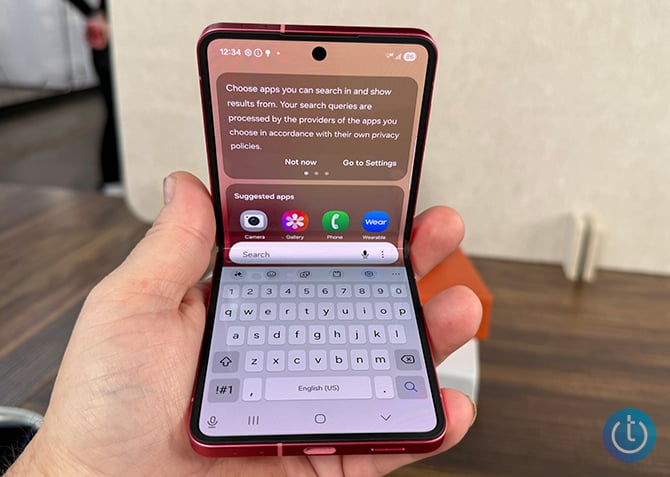
Meanwhile, on the flip side – pun intended – Samsung produced a pair of flip phones. The main event is the Samsung Galaxy Z Flip7, which is the company's flagship foldable. The big change here is the 4.1-inch cover screen, which Samsung calls the Flex screen. This is an edge-to-edge screen with just a 1.25mm bezel around it. It looks very similar to the cover screen on the Moto Razr and Razr Ultra (though it's .1" larger) with the cameras embedded in the screen. This was, frankly, a necessary step for Samsung, but it didn't quite go far enough.
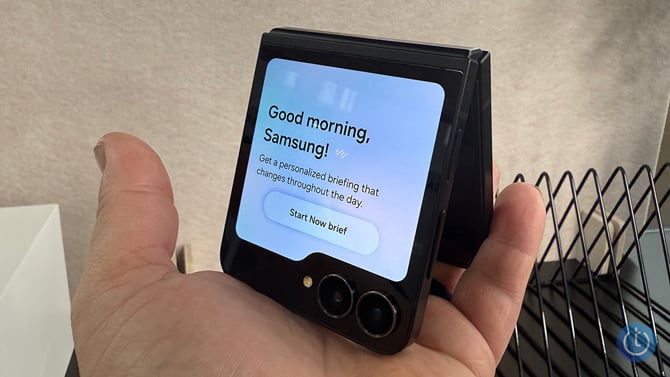
Read more: 2025 Razr Ultra: The Android Flip Phone I’d Actually Use
Like Z Flips of the past, Samsung has curated a selection of five apps that you can run on the cover screen, including Google Maps, Netflix, and YouTube. You can expand that catalog by going into the Labs section of the phone's settings. In the past, this required around 20 steps to complete, including downloading two separate apps from the Galaxy store (not the Play Store) and enabling this, that, and the other thing. Samsung has streamlined that process by eliminating a lot of steps and putting them directly in Settings. That's nice, but it's still a lot of hoops to jump through before you can make it work.
Samsung also added the Now Bar, the Now Brief, and Gemini Live to the home screen, all of which are welcome. Gemini Live, in particular, is nice because you can have a conversation with Google's AI without having to open the phone, which could be fun. The Now Bar is also welcome since it gives you critical information and actions on the cover screen without having to open the phone.
The two cameras on the outside are a 50-megapixel main camera and a 12-megapixel ultrawide. Samsung added the ability to zoom and add filters without opening the phone, which is another nice touch. Speaking of opening the phone, the inside screen increases from 6.7 inches to 6.9 inches, and the battery is a 4,300 mAh pack, which is up 300 mAh from last year.
The processor is Samsung's Exynos 2500, which is not a welcome change. Previous iterations have used Qualcomm's flagship processor, which regularly performs better than Samsung's equivalent. It's not uncommon for Samsung to ship a phone with an Exynos processor overseas, but it's rarer here in the U.S. Samsung's flagship flip phone starts at $1,099.99 on Samsung.com, which is the same price as last year.
Samsung Galaxy Z Flip7 FE
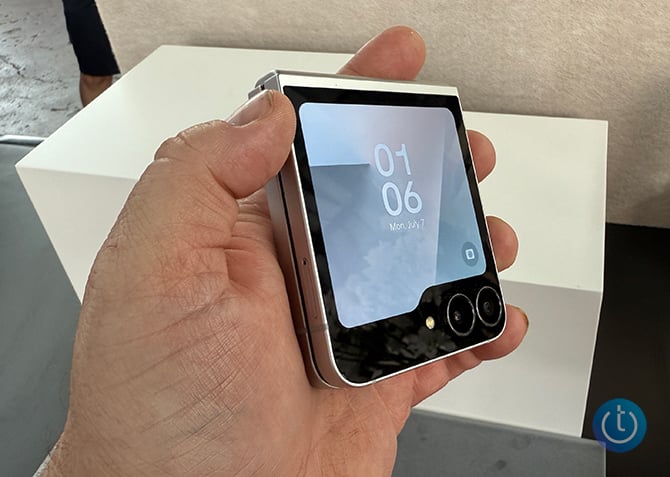
Finally, Samsung rounded everything out with the first flip phone with the FE label – the Samsung Galaxy Z Flip7 FE. A Samsung representative described it as sort of a middle ground between the Samsung Galaxy Z Flip5 and the Z Flip6. It has the same cover screen as both of those other phones, and many of the same internals. It runs Samsung’s Exynos 2400 processor, which was last year's flagship processor.
It has the same 50-megapixel camera as the Flip7, which is a nice touch, but the idea here is you'll be getting a more accessible version of Samsung's flip-style foldable. It starts at $899.99 on Samsung.com, which is still pricey, but it's always nice when a company can launch a foldable with a sub-$1,000 price point.
[Image credit:Adam Doud/Techlicious]

